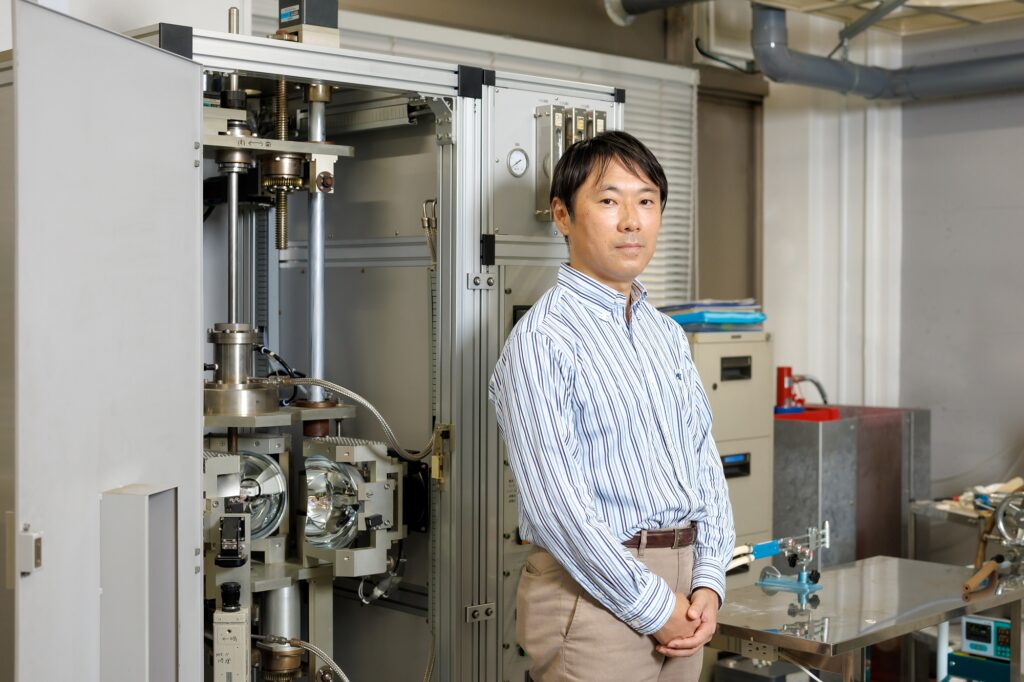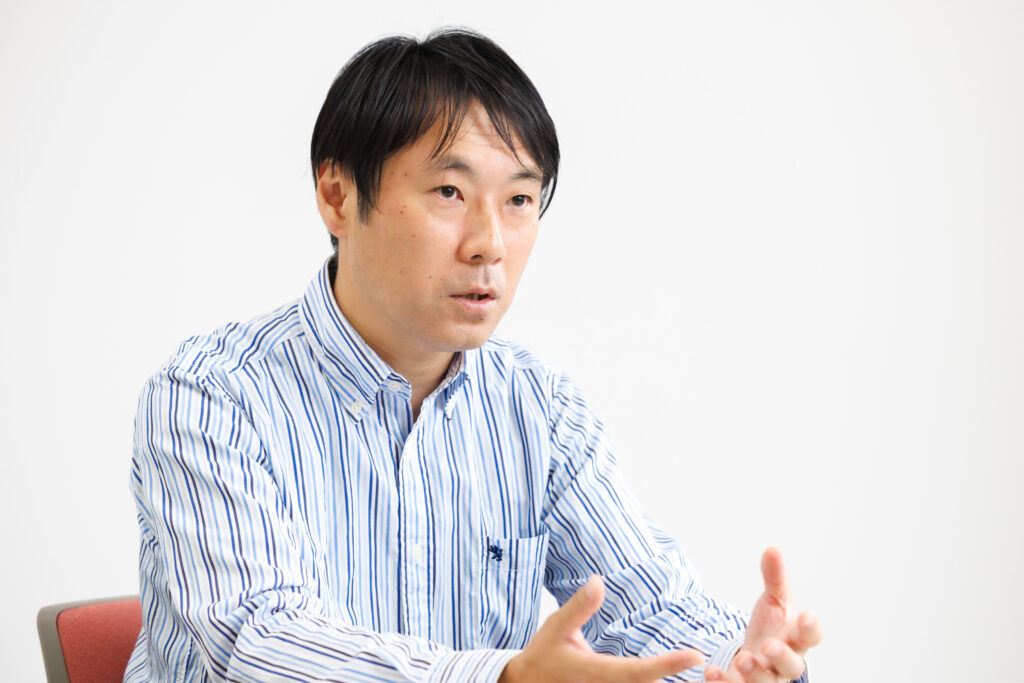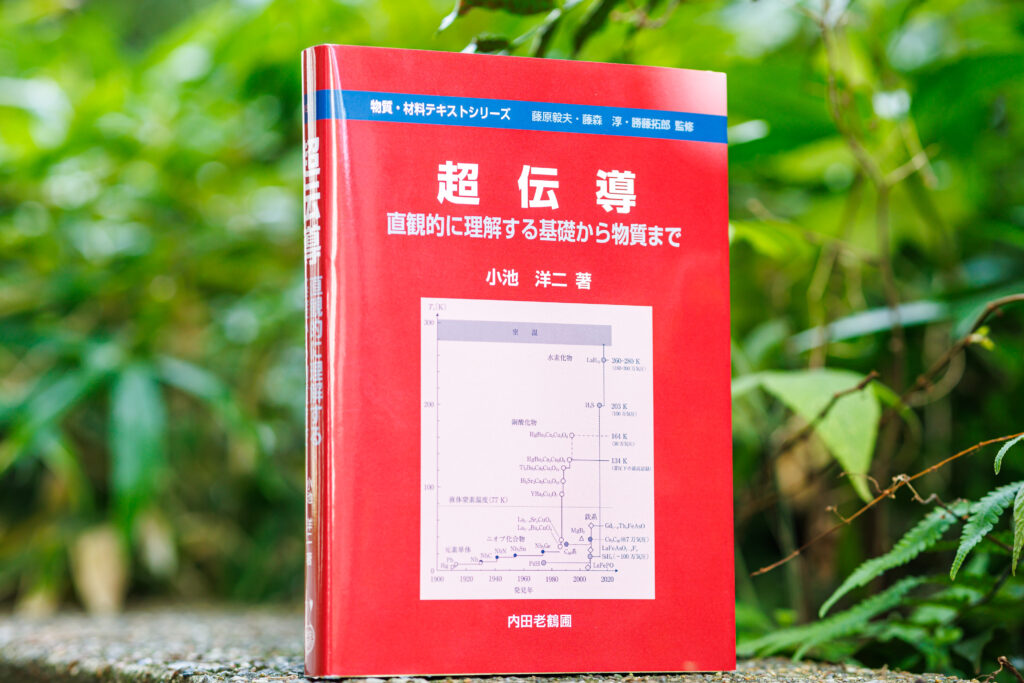
Professor Tadashi Adachi from the Faculty of Science and Technology works on unravelling the mechanism behind superconductors—which have zero electrical resistance under certain conditions—and developing new superconducting materials. He talks about the present and future of this research, which is expected to lead to new innovations in industry and energy.
Electricity is an essential part of our lives. It is delivered from power plants through power transmission cables, distribution cables and other electric wires. The main material used in these wires is copper, which conducts electricity easily. However, all materials have resistance, which causes some electricity to escape as heat, and it is not possible to deliver 100% of the electricity. Superconductors, which have zero electrical resistance under certain conditions, are being used to address this issue. My research resolves around unravelling the mechanism behind superconductors and developing new materials that can become superconductors.
If we can use superconductors with zero electrical resistance in electric wires, we will be able to significantly reduce electricity loss and thereby save energy. We can address the issue of electricity shortage and also help to reduce CO2 by connecting the world with superconducting cables, generating electricity using natural energy from sunlight through solar panels installed in deserts, and delivering electricity efficiently to all parts of the world around the clock. Thus, it is said that superconductors will significantly change global industry if they can be used in ways that directly affect our lives.
Seeking materials that become superconductors at higher temperatures

The linear motor car, Japanese high-speed maglev train scheduled to begin operation in 2027, is an example of an actual application of superconductors. Linear motors use powerful electromagnets to levitate and drive the vehicle, and superconductors are used in the metallic coils for making these electromagnets. In addition, superconducting electromagnets are also found at the heart of magnetic resonance imaging (MRI) medical diagnostic equipment.
There is, however, a major issue with superconductors. To reduce electrical resistance to zero, it is necessary to cool to extremely low temperatures. Both linear motors and MRI systems do not work unless cooled below minus 200 degrees Celsius. In the ambient pressure that we live in, we have discovered a material that becomes a superconductor at minus 138 degrees Celsius, the highest record so far. Researchers around the world are working to develop materials that become superconductors at higher temperatures.
The development of new materials is a repetition of solid, sober works. I devise “recipes” using superconductor-related academic papers and other references, then go about processes such as mixing and sintering various types of materials. The superconducting materials produced are examined using analytical devices to investigate properties such as atomic structure, electrical resistance, and the magnetic properties held by these materials. It is tedious work that is analog in nature; I am always doing something with my hands. Moreover, there are certain material properties that cannot be investigated without using large accelerators, of which there are only five in the world. Therefore, my students and I leave the laboratory to travel overseas several times each year.
We do not understand the mechanism behind why the electrical resistance of materials that become superconductors at relatively higher temperatures drop to zero. Unravelling this mechanism will provide hints for developing new materials. Therefore, I also put effort into research that investigates the properties of materials. One achievement is that, for electron-doped high-temperature superconductors, we have discovered how superconductivity emerges through the reduction process of removing oxygen.
Making new materials is like hunting for treasure
This research is like hunting for treasure. It takes time and effort to find something, but once it is discovered, it can lead to devices that will significantly change our lives, such as in the case of linear motors. It is even said that whoever comes up with a superconductor that can achieve zero electrical resistance at room temperature will be able to win the Nobel Prize.
It is an endless journey, but it is not impossible. Several years ago, a group in Germany discovered a phenomenon that serves as a hint. It was an amazing method of using pressure, instead of cooling, to induce superconductivity. This is truly a valuable hint and draws great interest.
The basic research forms the core of things being used in the world today. We cannot make things without materials. Keeping this point in mind at all times while undertaking research also serves as motivation. Going forward, I hope to continue going about my research with dreams and a sense of mission.
The book I recommend
“Choudendou” (Superconductivity)
by Yoji Koike, Uchida Rokakuho Publishing

The author of this book was my supervisor when I was in graduate school. As he is a researcher that specializes in experiments, I feel that he explains difficult concepts in ways that are easy to understand. I especially recommend this book to students—those in university and those in the master’s program at graduate school—who are starting to learn about superconductivity.
-
Tadashi Adachi
- Professor
Department of Engineering and Applied Sciences
Faculty of Science and Technology
- Professor
-
Graduated from the Department of Applied Physics, School of Engineering, Tohoku University, and received his Ph.D in Engineering after completing the doctoral program at the university’s Graduate School of Engineering. Took on several positions—such as research fellow at Japan Society for the Promotion of Science, assistant professor at Tohoku University’s Graduate School of Engineering, visiting scientist at Simon Fraser University, and associate professor at Department of Engineering and Applied Sciences, Sophia University—before assuming his current position in 2018. Also serves as visiting professor at the Institute of Materials Structure Science, High Energy Accelerator Research Organization (KEK-IMSS).
- Department of Engineering and Applied Sciences
Interviewed: September 2022